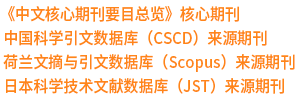[1] 张培震. 中国地震灾害与防震减灾[J]. 地震地质, 2008, 30(3): 577-583.
[2] 王晓青, 黄树松, 丁香, 等. 尼泊尔8.1级地震建筑物震害遥感提取与分析[J]. 震灾防御技术, 2015, 10(3): 481-490.
[3] 王晓青, 魏成阶, 苗崇刚, 等. 震害遥感快速提取研究以2003年2月24日巴楚—伽师6.8级地震为例[J]. 地学前缘, 2003, 10(s1): 285-291.
[4] 朱博勤, 魏成阶, 张渊智. 航空遥感地震灾害信息的快速提取[J]. 自然灾害学报, 1998, 7(1): 34-39.
[5] Trinder J C, Salah M. Aerial images and LIDAR data fusion for disater change detection[J]. Remote Sensing and Spatial Information Sciences, 2012, 1-4: 227-232.
[6] 窦爱霞, 马宗晋, 黄文丽, 等. 基于机载LiDAR和多光谱图像的建筑物震害自动识别方法[J]. 遥感信息, 2013, 28(4): 103-109.
[7] Johnson K, Nissen E, Saripalli S, et al. Rapid mapping of ultrafine fault zone topography with structure from motion[J]. Geosphere, 2014, 5(10): 969-986.
[8] Smith M J, Chandler J, Rose J. High spatial resolution data acquisition for the geosciences: kite aerial photography[J]. Earth Surface Processes and Landforms, 2009, 34(1): 155-161.
[9] Eisenbeiss H, Lambers K, Sauerbier M. Photogrammetric documentation of an archaeological site (Palpa, Peru) using an autonomous model helicopter[J]. Proc Cipa XX International Symposium, 2005, 238-243.
[10] Niethammer U, Rothmund S, James M. UAV-based remote sensing of landslides[J]. International Archives of Photogrammetry, Remote Sensing and Spatial Information Sciences, 2010, ISPRS Comm. V(XXXVIII): Newcastle-upon-Tyne, U.K.
[11] James M R, Robson S. Straightforward reconstruction of 3D surfaces and topography with a camera: Accuracy and geoscience application[J]. Journal of Geophysical Research: Earth Surface, 2012, 117(F3): 94-96.
[12] Lucieer A, Jong S M D, Turner D. Mapping landslide displacements using Structure from Motion (SfM) and image correlation of multi-temporal UAV photography[J]. Progress in Physical Geography, 2014, 38(1): 97-116.
[13] Vosselman G. Building Reconstruction Using Plana r Faces in Very High Density Height Data[C]. International Archives of Photogrammetry and Remote Sensing, 1999, 32(3/2): 87-92.
[14] Morgan M, Habib A. 3D TIN for Automatic Building Extraction from airborne Lase r Scanning Data[C]. The ASPRS Gateway to the New Millennium, St. Louis, Missouri, 2001.
[15] Hofmann A D. Analysis of T in-structure Parameter Spaces in Airborne Laser Scanner Data for 3D Building Model Generation[C]. International Archives of Photogrammetry, Remote Sensing and Spatial Information Science, 2004, 35(B3): 302-307.
[16] 尤红建, 苏林, 李树楷. 利用机载三维成像仪的DSM数据自动提取建筑物[J]. 武汉大学学报信息科学版, 2002, 27(4): 408-413
[17] Awrangjeb M, Fraser C. Automatic segmentation of raw LiDAR data for extraction of building roofs[J]. Remote Sensing, 2014, 6(5): 3716-3751.
[18] Westoby M J, Brasington J, Glasser N F, et al. ‘Structure-from-Motion’ photogrammetry: A low-cost, effective tool for geoscience applications[J]. Geomorphology, 2012, 179: 300-314.
[19] Snavely N. Scene reconstruction and visualization from Internet photo collections: A Survey[J]. Ipsj Transactions on Computer Vision and Applications, 2011, 3: 44-66.
[20] 魏占玉, Arrowsmith Ramon, 何宏林, 等. 基于SfM方法的高密度点云数据生成及精度分析[J]. 地震地质, 2015, 37(02): 636-648.
[21] Mikolajczyk K, Schmid C. Scale & Affine Invariant Interest Point Detectors[J]. International Journal of Computer Vision, 2004, 1(60): 63-86.
[22] Lowe D G. Distinctive Image Features from Scale-Invariant Keypoints[J]. International Journal of Computer Vision, 2004, 60(2): 63-86.
[23] 曾文宪, 陶本藻. 三维坐标转换的非线性模型[J]. 武汉大学学报(信息科学版), 2003, 28(5): 566-568.
[24] 李陈侠. 东昆仑断裂带东段(玛沁—玛曲)晚第四纪长期滑动习性研究[D]. 中国地震局地质研究所, 2009.
[25] Zhang W, Qi J, Wan P, et al. An Easy-to-Use Airborne LiDAR Data Filtering Method Based on Cloth Simulation[J]. Remote Sensing, 2016, 6(8): 501. |


